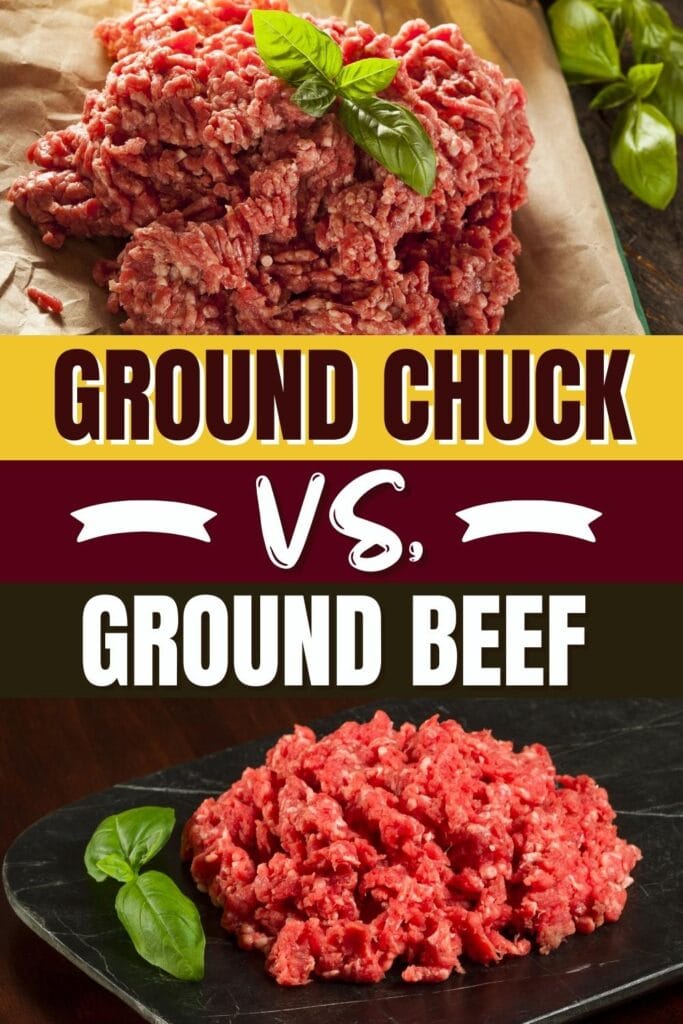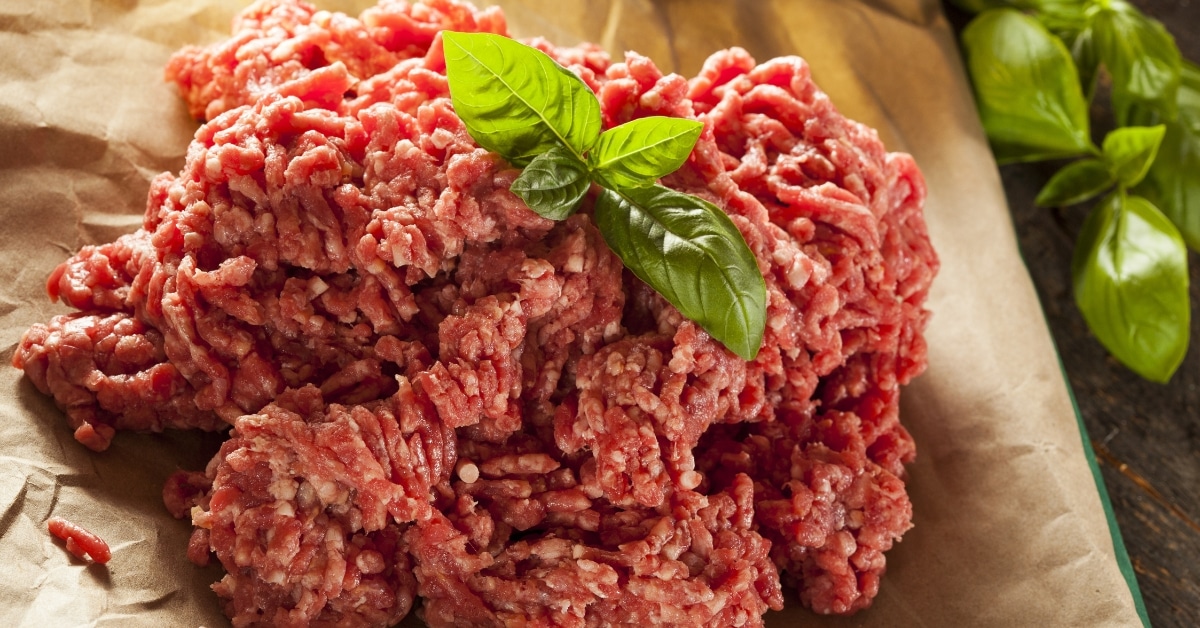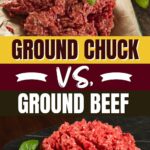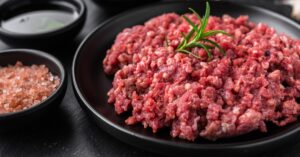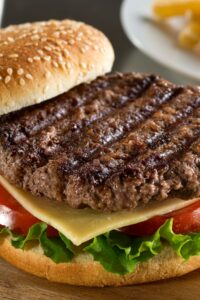What makes ground chuck vs. ground beef different? If you’ve ever gone to your local deli or butcher and got confused by the labels on ground meat, you’re not alone.
There are 6 key things that set them apart. It all comes down to cuts of meat, cohesion, fat content, flavor, price, and culinary uses.

I’m here to help you decide which one to use and for what purposes. Knowing the specifics will help you make better meals that are more suited to your taste preferences and diet.
Learn the difference between ground chuck and ground beef. That way, you can make the best meatballs, burgers, and meatloaf you’ve ever had! Let’s get into it.
What Is Ground Chuck?
Ground chuck is a particular type of ground beef, sourced from the chuck cut, which is near the cow’s shoulders and neck.
It contains flavorful and moderately fatty meat, with a fat content ranging from 15 to 20%. It’s often labeled as lean ground beef because of its lower fat content.
Although the chuck cut has tough connective tissues due to the muscle being well-used, grinding it tenderizes the meat.
This makes ground chuck an excellent choice for dishes like burgers and meatballs. It’s rich and flavor and retains its shape well during cooking.
It’s also more affordable, so it’s a smart choice for both taste and budget.
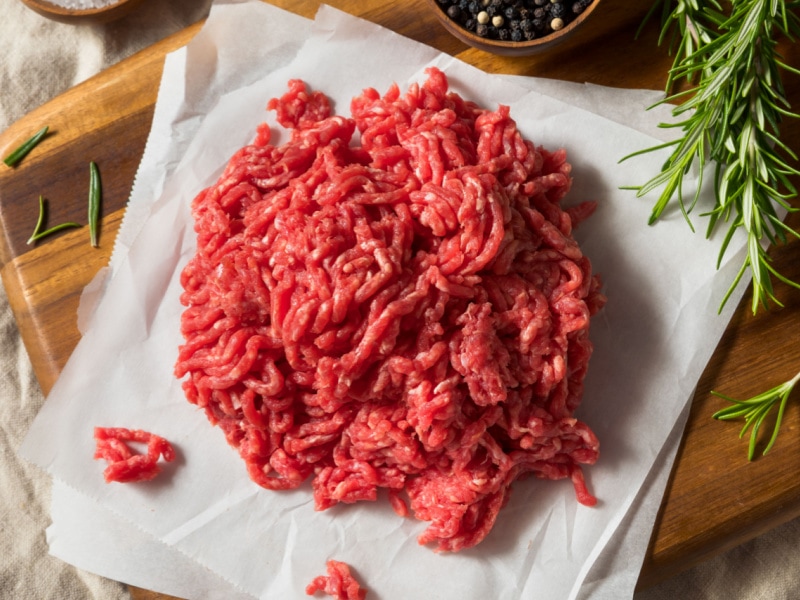
What Is Ground Beef?
Ground beef is made from the trimmings and edge pieces of various beef cuts.
As an all-encompassing term, “ground beef” refers to beef that’s not sourced from a specific part.
Since ground beef is derived from a mixture of cuts, it’s a great way to make use of the entire cow. It’s popular in many dishes for its varied texture and taste.
The flavor and quality of ground beef can vary because of the diversity of cuts involved. The USDA regulates the labeling of ground beef, and the maximum fat content is capped at 30%.
For a leaner option, “extra lean” ground beef contains less than 7% fat. Generally, the leaner the ground beef, the higher the price.

Ground Chuck vs. Ground Beef (What’s the Difference?)
It’s time to dissect the differences between ground chuck and ground beef!
Note: to avoid confusion, we’ll focus on ground beef that encompasses a variety of beef cuts, rather than one specific cut.
Cuts of Meat
Ground beef is made from various trimmings of different cuts, primarily chuck and round. In general, it’s a combination of bits and pieces from various cuts of beef.
However, ground beef also using the following cuts. Naturally, their flavor and texture also vary.
- Sirloin: This cut is lean and packed with flavor. It’s an excellent choice for a healthier option.
- Brisket: Also lean, brisket boasts a pronounced beefy taste that will please meat lovers.
- Short Ribs: Another lean choice, short ribs offer a rich flavor that’s both hearty and satisfying.
- Skirt Steak: Skirt steak is lean and has a distinct tangy flavor. It’s a fantastic option for those seeking something different.
Ground chuck is a different story. It’s only derived from the chuck section, so its taste and texture are more consistent.
Cohesion
Ground chuck, with its ideal lean-to-fat ratio, is a champion in cohesion. It holds together well, thanks to the perfect balance of lean meat and fat.
This ideal ratio also ensures your meat dishes stay moist, tender, and delicious.
This is why ground chuck is the go-to for creations like scrumptious burger patties, sliders, and meatballs.
You might think that the fattier the meat, the better it is for burgers and meatballs and such, but you’d be wrong.
Note that as fat content rises, the binding ability diminishes. The fat melts during cooking, making the mixture fall apart.
That said, ground beef with high-fat content, above 20%, is not the best choice.
Fat Content
With 80% lean meat and 20% fat, ground chuck is your friend if you’re looking for a balanced lean-to-fat ratio.
This ratio is why you might see it labeled as “extra lean ground beef” or “80/20 ground beef” at your local store.
Meanwhile, regular ground beef comprises around 70% lean meat and a heftier 30% fat.
If the trimmings are sourced from brisket or shank, expect the fat content to be higher. This is because of the marbling in these cuts.
This makes ground beef especially wonderful in dishes where you want a rich taste, such as in a cheesy beef casserole.
Fun fact: Ground beef in the United States typically packs 25-30% fat. But across the pond in France and Germany, it’s leaner at around 15%. Different strokes for different folks!
Flavor
Ground chuck and ground beef both bring flavors to the table but in different ways.
With ground chuck’s ideal lean-to-fat ratio, you get a richer, beefier taste.
On the flip side, ground beef has that extra fat that makes a dish extra juicy.
It’s a flavor toss-up. Choose ground chuck for a robust, meaty experience. Or opt for ground beef if you’re all about that sumptuous, juicy goodness.
Price
Ground chuck costs more. Here’s why: it’s made from specific cuts, which cost more to source.
Regular ground beef is cheaper because it’s made from a mix of leftovers. They would otherwise not make it to the shelves.
This mix often includes more economical cuts, such as shank and brisket, making it kinder to your wallet.
So, pick ground chuck if you’re okay spending a bit more for quality, or go for ground beef if you’re watching your budget.
Culinary Uses
Despite their differences, ground beef and ground chuck can be used interchangeably in many recipes.
But ground chuck’s ability to hold its shape makes it ideal in dishes where structure is key, like patties and meatballs.
On the other hand, ground beef usually starts its journey crumbled in the pan. You can then season and use it in a variety of ways.
Taco night? Bring on the taco seasoning. Craving Asian flair? Korean ground beef stir-fry is a call away. Want a comforting classic? Sloppy joes and spaghetti never disappoint.
Use ground chuck when you need your meat to keep its shape, like in burgers and meatballs.
For everything else, especially dishes where the meat is crumbled, ground beef is your versatile companion.
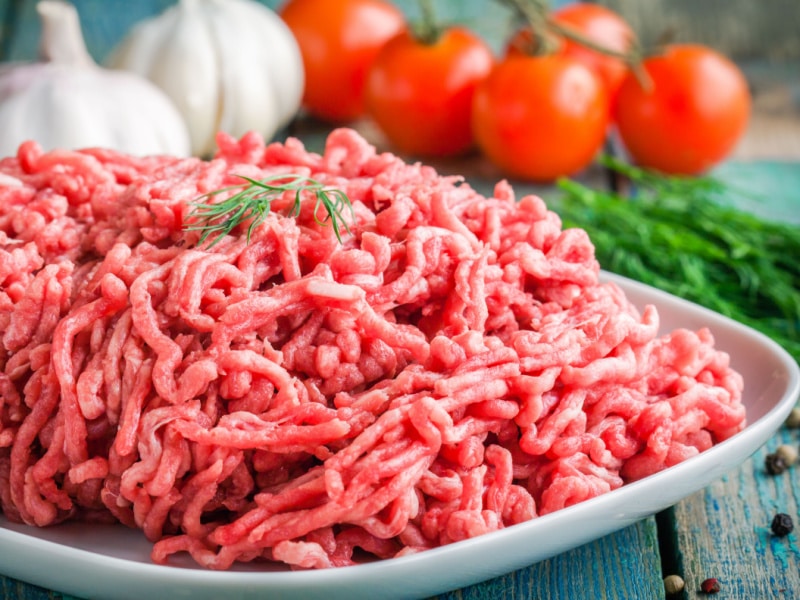
Ground Chuck vs. Ground Beef (Which Is Better?)
Ground chuck vs. ground beef, which reigns supreme? Well, it’s like picking a favorite ice cream flavor. It depends on what you’re in the mood for!
Ground chuck, with its balanced lean-to-fat ratio, is great for dishes requiring structure, like burgers and meatballs.
If you’re looking for a richer beef flavor and fewer calories, ground chuck is a solid choice.
Ground beef has a higher fat content which makes it juicier. This makes it ideal for dishes where you want that extra succulence, like tacos or sloppy Joes.
The choice ultimately depends on the dish you’re making, your budget, and your personal taste or dietary needs.
There’s no absolute winner. It’s about what works best for you.
